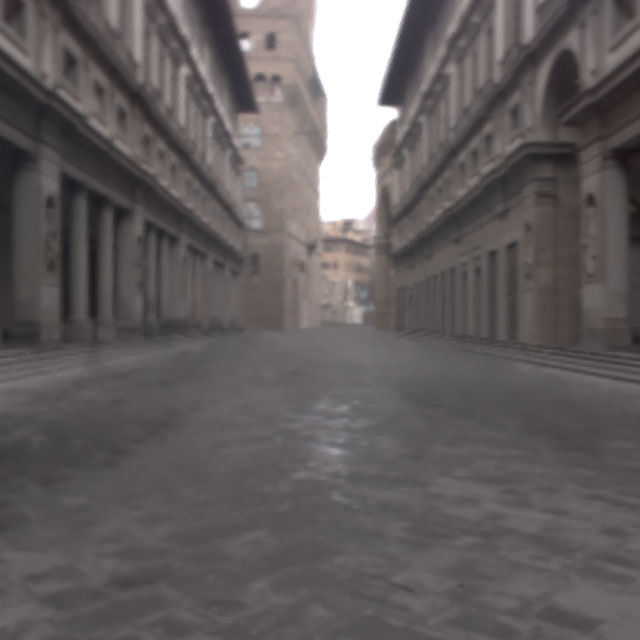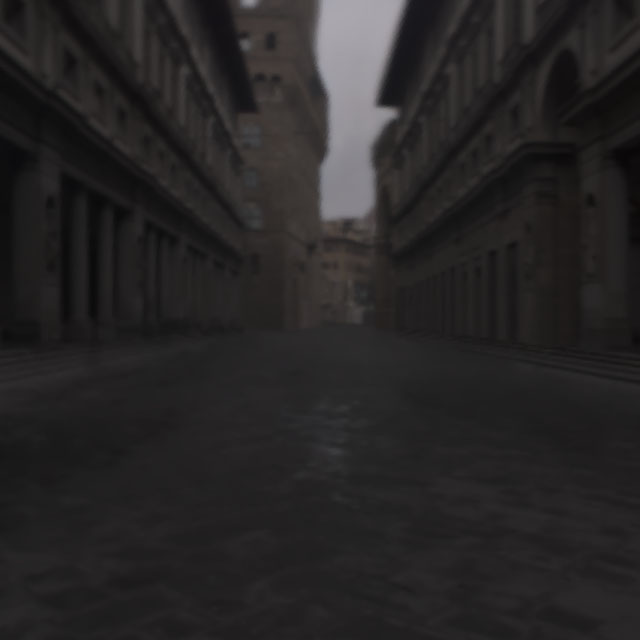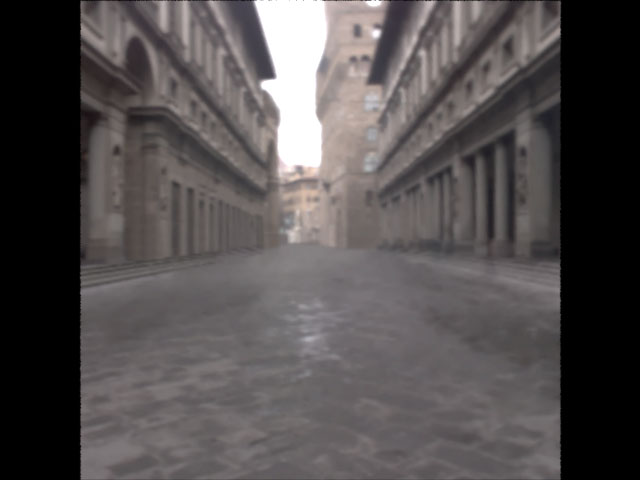Radiance

BMRT
As a project for both CS184 and CS199, we thought it would be nifty
if we could get BMRT to take high-dynamic range images and do what we did
with Radiance on BMRT, which is to illuminate a scene using an hdr image
as a light source (glow). We found BMRT to be very limited in the
sense that it doesn't support high quality images for texture/environment
mapping. HDR images are 32 bits per sample when converted to TIFF,
while the accepted TIFF images are only 8 bits per sample. It also doesn't
allow global variables and definition of types besides predefined ones,
and there is no support for file management. Surface shaders have
no access to light global variables, and vice-versa. We did manage
to make the equivalent of the Radiance glow in BMRT, but lost the high-dynamic
range of the original picture. This was done by exposing the original pic image until it was very dark, and substituting the ambient value for the image, not the world, by this exposure value. In the end, BMRT doesn't seem to be
the best renderer to use for image-based lighting, but it is still good
enough for general purpose renderings.



Upper left: original pic image. Upper right: exposed down image. Bottom: glowing image as rendered by BMRT without additional lightsources
The following images were rendered using BMRT.
This is a glass cup in my parent's bathroom in Texas. The first image shows what it would look like without the radiosity calculations, and the second image is the final rendering with the radiosity option. The glass cup was modeled in sPatch, a spline-based 3D modeler that can output rib files. The shaders used for the walls, mirror, and glass came with the BMRT package. The shader for the marble was originally blue and did no calculations on reflections. So I added general color input and ray tracing for reflections.
This is a clock above the fireplace in my parent's house. Just plain modeling with polygons. The only cool thing here is the reflection of the red ball on the pendulum. I also added ray tracing on the dark wood shader for a polished look.
This is my attempt to write a shader from scratch. It fades from a specified color to another, using the basic plastic illumination model. Above left is a mushroom (or a little hut), and to the right is a shell (I know it looks like a fan), from a previous exercise in transformations.
This is a surface shader that makes a wire screen. It takes a different number of cycles in the vertical and horizontal directions. Below is a birdcage using this shader.
Another shader I wrote for practice. It lays out a checker pattern using three different colors, a la picnic or restaurant tablecloth.